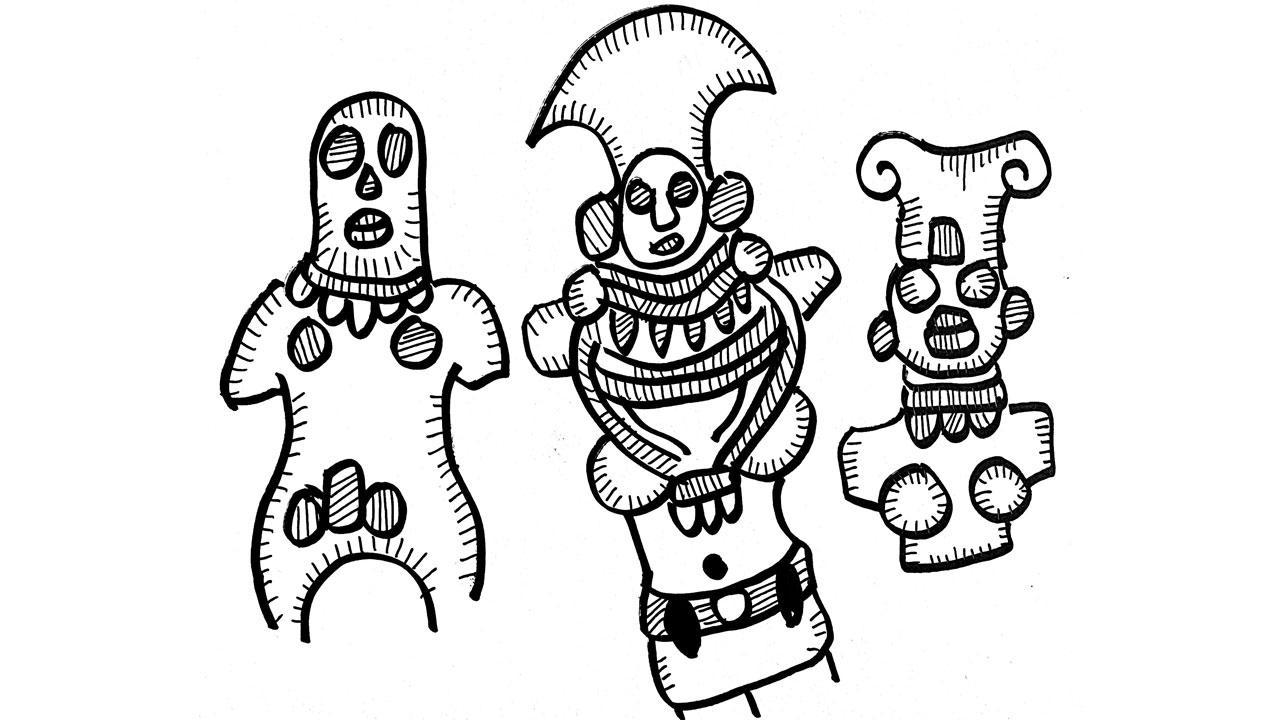From Harappa, we get information about clothes, jewellery and food. From the Vedas, we get more information about their relationship with men.

Illustration/Devdutt Pattanaik
 Harappan cities thrived between 2500 BCE and 1900 BCE. The Vedic culture thrived between 1000 BCE and 500 BCE. Almost 1,000 years apart, the two cultures reveal two different worlds for women. When we study Harappan women and Vedic women, we realise they display characteristics found in Indian women even today. From Harappa, we get information about clothes, jewellery and food. From the Vedas, we get more information about their relationship with men.
Harappan cities thrived between 2500 BCE and 1900 BCE. The Vedic culture thrived between 1000 BCE and 500 BCE. Almost 1,000 years apart, the two cultures reveal two different worlds for women. When we study Harappan women and Vedic women, we realise they display characteristics found in Indian women even today. From Harappa, we get information about clothes, jewellery and food. From the Vedas, we get more information about their relationship with men.
ADVERTISEMENT
We know about Harappan women from archaeological evidence. There are images of women stopping men from fighting, women connected with trees, women as tiger goddesses. In the major cities, we find clay images of bejewelled turbaned women. Women wore cowrie shells around their neck. Cowries were probably currency and so this practice of wearing cowries around the neck continues today with the practice of wearing gold coins around the neck. They wore beaded necklaces as well as girdles around their hips. These may have been part of some local ritual. The Harappan women loved bangles, a practice which was unique to this civilisation and continues to date. Most cultures have bracelets, but bangles are unique to India, it seems, and starts from Harappa. These women probably invented “rimmed” utensils that we still used in the kitchen today: thali, lota, handi. Their houses had courtyards and they used cotton garments, and probably even sindoor. Their food had spices that we use today such as turmeric and ginger, and they cooked the egg plant. They also loved fish and all kinds of meat.
While we have only material evidence about the Harappan women, we have only textual evidence for Vedic women. The only material evidence of Vedic period is primarily painted grey ware pottery in the Gangetic plains, different from the red-black Harappan pottery of Indus. This information comes from songs found in the Rig Veda. Every time women are presented, it is in relationship to men, not independent of men. There is Apala, who seeks the love of a husband who doesn’t like her because she is not pretty. There is Gosha, whose husband is impotent, but gains potency later. There is Lopamudra, who yearns for her husband to pay her more attention than his rituals. There is Yami, who wants to unite with her husband Yama, but he rejects her, because he is her brother. There is Indrani, who boasts about the sexual prowess of her husband Indra. There is Urvashi who is no longer interested in her husband Pururava and wants to go back to the celestial realm known as Swarga. There is Aditi, mother of gods. There is the grand dawn-goddess Usha, sister of the Night, but she is forgotten in later texts.
There are suggestions that the Harappan women were probably matriarchal. In cemeteries, remains of women who are genetically related are found. The bones of men show less genetic relations, indicating the women did not travel to their husbands’ houses. By contrast, the Vedic world seems more patriarchal and suggests a world where women travelled to the house of the man, and were expected to bear children. The male children were separated from their mothers and after initiation were introduced to the Vedic male gods of their fathers. The Harappan women were more urban and mercantile, probably involved in weaving, while the Vedic ones were more pastoral, and later agricultural. It is impossible to imagine the two worlds as the same.
The author writes and lectures on the relevance of mythology in modern times. Reach him at devdutt.pattanaik@mid-day.com
 Subscribe today by clicking the link and stay updated with the latest news!" Click here!
Subscribe today by clicking the link and stay updated with the latest news!" Click here!








